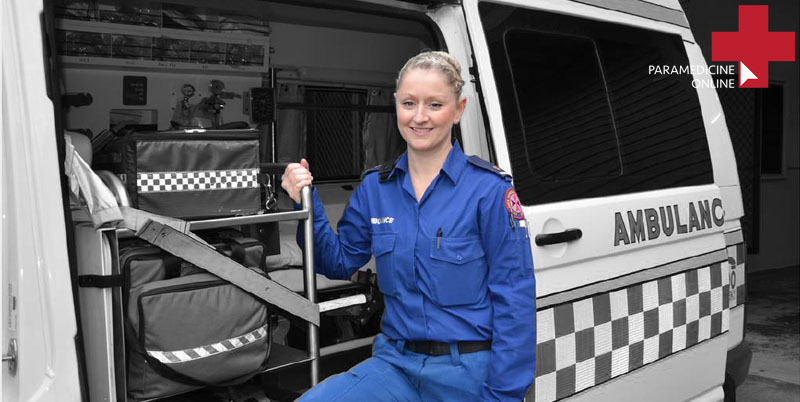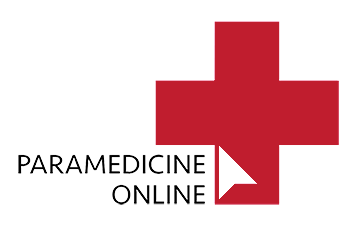
HLT31115 – Certificate III in Non-emergency Patient Transport
This course has been superseded by the HLT31120 – Certificate III in Non-Emergency Patient Transport
The new Patient Transport training course is available now.
What you can expect from this Patient Transport training course
- Frequent enrolments, don’t wait months to get started
- Freedom to study when and when you like
- Study at your own pace and become part of a supportive online community
- You choose how fast or slow you want to study
- Enjoy the convenience of local support from a large team of student success staff
- Paramedical tutors and trainers will always be there for you
- Be assured the equipment and learning materials are up-to-date and relevant
- Attend a 3 day clinical workshop to practice everything you’ve learned
- Drive a real ambulance, fully equipped with the latest emergency medical equipment
- Receive a Nationally Recognised certificate
The Certificate III in Non-Emergency Patient Transport is one of the most popular entry-level qualifications to find a job in the health care industry. The theory studied will give you essential knowledge required to start transporting non-critical patients to and from their home to a medical facility. On any given day, you could be picking up a patient from home and taking them to a hospital or day surgery; and your next job could be assisting a patient who has collapsed at a sporting event and needs off-site medial attention; and even taking patients to a waiting aircraft where they will be flown to a location where they will receive more advanced clinical care.
This is the appeal of the rapidly-expanding patient transport sector. Every day is different from the next. You get to meet new and interesting people, travel to and from different locations; and enjoy a varied working day to keep you interested, stimulated and challenged. Throughout a typical working week, you’ll meet so many different patients and get a good feeling about how your actions and interventions make someone else smile and feel 100% safe in your care.
Whilst the Certificate III in Non-emergency Patient Transport doesn’t provide the same level of knowledge as the HLT41115-Certificate IV in Health Care or the HLT51015-Diploma of Paramedic Science; what you will study helps you become good at your job, and creates the opportunity to keep on learning.
Please note: the HLT41115 – Certificate IV in Health Care has been superseded by the HLT41120 – Certificate IV in Health Care; and the HLT51015 – Diploma of Paramedical Science by the HLT51020 – Diploma of Emergency Health Care. These new qualifications are available now. Places are limited due to the popularity of these courses – apply now.
So many different jobs you can do
One of the great positives about working in the health care industry is there are so many different jobs you can do. On top of that, the way training qualifications are structured; when you study a Certificate III qualification, you can be sure the next level up (in a health care course that is), will contain some of the theory you already learned – so there’s no need to learn it again.
In fact, you’ll be more than likely to receive credits towards the next level course. This is called ‘credit transfer’ and is designed to also fast track you into the next level of learning. Potentially, you could save $100’s if not $1000′ on your training over the course of your career.
The HLT31115-Certificate III in Non-Emergency Patient Transport (superseded by the HLT31120 – Certificate III in Non-Emergency Patient Transport) can be completed in around 6-12 months if you apply yourself and follow the recommended study program.

Completing this nationally accredited Certificate III course will allow you to confidently apply for entry-level jobs in private sector:
- Private Hospital Transport Officer
- Patient Transport Officer (PTO)
- Ambulance Attendant
- Ambulance Officer
- Community Ambulance Volunteer
Click here to view the current job opportunities for this qualification.
Hands-on Experience?
Practical experience transporting real patients is not included in this level of course. However, you will be driving an ambulance during the 3 day clinical workshop and transporting fellow students (acting as patients). The driving scenarios are to help you become skilled at loading and unloading patients in a safe manner. This is one of the most important aspects of the job. The security, safety and comfort of your patient(s) is the number one priority.
To get as much experience as you can, we recommend doing voluntary work experience to build your confidence. This is the perfect way to meet companies and organisations who provide patient transport services.
Doing so can help grow your network of employers and dramatically improve your chances of securing work when you complete the course. There are many organisations responsible for coordinating and providing basic First Aid officers through to patient transport activities.

What you’ll be doing at the 3-day Clinical Workshop?
The 3 day face-to-face workshop gives you the opportunity to learn directly from industry experts, trainers and educators. You’ll also meet other students, work in teams and take part in practical demonstrations and scenarios. You’ll be working around the simulated skills stations, where you’ll learn many procedures such as IV insertion and how to use and dispose of needles safely. You will have your questions answered by clinically trained and experienced instructors/trainers who are available to take your calls and answer any questions you may have as you progress through the training.
Patient Transport Officer jobs
One of the biggest things to think about in deciding to enrol in this course is finding a job at the end of it.
It’s great to do a course, but at the end of it, we all want to be employed and feel our investment in the course has been a good one. Although no one can guarantee employment, the patient transport is a fast-growing sector. More and more private companies like NPT in Victoria are expanding their services to NSW and WA; as well as developing new opportunities in Queensland. No matter where you live in Australia, if you are dedicated to developing a career in the sector, the opportunities to succeed are immense.
With this in mind, we have added links to real Patient Transport and Ambulance Attendant jobs that have been advertised on SEEK and other online jobs boards. Some of them may be out of date, however, they do show the requirements of the job as well as how much you can earn.
What You’ll Learn In This Course
The HLT31115 – Certificate III in Non-Emergency Patient Transfer has been superseded by the HLT31120 – Certificate III in Non-Emergency Patient Transport, will ensure you develop the required skills required to enter the health care industry as a Patient Transport Officer.
To give you an idea of how what you’ll learn in this course is exactly what you’ll be expected to do out in the field, the following units of competency apply to the tasks and activities you will perform every day.
Units of Competency
With the introduction of the HLT31120 – Certificate III in Non-Emergency Patient Transport, some of the following study topics (Units of Competency) may change, but are now more-than-ever, relevant to the industry.
BSBMED301 – Interpret and apply medical terminology appropriately
This unit describes the skills and knowledge required to understand and respond to instructions; to carry out routine tasks and communicate with a range of internal/external clients in a medical environment; as well as use appropriate medical terminology.
- Respond appropriately to instructions which contain medical terminology
- Carry out routine tasks
- Use appropriate medical terminology in oral and written communication
HLTINF001 – Comply with infection prevention and control policies and procedures
This unit describes the skills and knowledge required to follow organisational infection prevention and control procedures, including implementing standard and transmission-based precautions and responding to infection risks.
- Follow standard and additional precautions for infection prevention and control
- Identify infection hazards and assess risks
- Follow procedures for managing risks associated with specific hazards
HLTAAP001 – Follow procedures for routine safe removal of patient
This unit describes the knowledge and skills required to ensure safe removal of the patient under routine conditions as part of emergency work where patients are not anticipated to have an immediate life threatening injury, illness or condition.
- Work with information about the human body
- Recognise and promote ways to support healthy functioning of the body
HLTAMB001 – Recognise healthy body systems
- Assess non-emergency situation in relation to safe removal of the patient
- Implement procedures for safe removal of the patient
- Monitor removal procedure
CHCCOM005 – Communicate and work in health or community services
This unit describes the skills and knowledge required to communicate effectively with clients, colleagues, management and other industry providers.
- Communicate effectively with people
- Collaborate with colleagues
- Address constraints to communication
- Report problems to supervisor
- Complete workplace correspondence and documentation
- Contribute to continuous improvement
HLTAMB014 – Transport Non-Emergency Patients under Operational Conditions
This unit describes the skills and knowledge required to load, unload and drive vehicles safely to transport non-emergency patients to and from a facility or service. It includes using communication equipment and checking vehicles and equipment in order to restock and remedy faults.
- Prepare and check vehicle and equipment
- Ensure faults in vehicle and equipment are remedied
- Convey and receive information using necessary modes of communication
- Load, unload and secure non-emergency patient and other specific personnel for transportation
- Drive vehicle
HLTAID003 – Provide First Aid
This unit describes the skills and knowledge required to provide a first aid response to a casualty. The unit applies to all workers who may be required to provide a first aid response in a range of situations, including community and workplace settings.
- Respond to an emergency situation
- Apply appropriate first aid procedures
- Communicate details of the incident
- Evaluate the incident and own performance
HLTWHS002 – Follow Safe Work Practices for Direct Client Care
This unit describes the skills and knowledge required for a worker to participate in safe work practices to ensure their own health and safety, and that of others in work environments that involve caring directly for clients. It has a focus on maintaining safety of the worker, the people being supported and other community members.
- Follow safe work practices for direct client care
- Follow safe work practices for manual handling
- Follow safe work practices for infection control
- Contribute to safe work practices in the workplace
- Reflect on own safe work practices
HLTAMB011 – Manage a routine non-emergency scene
This unit describes the skills and knowledge required to manage routine non-emergency situations that are not anticipated to be life-threatening to ensure safety at the scene.
- Attend non-emergency scene
- Take appropriate measures to ensure safety at the scene
HLTAID006 – Provide Advanced First Aid
This unit describes the skills and knowledge required to provide an advanced first aid response, including management of the incident and other first aiders, until the arrival of medical or other assistance.
- Respond to an emergency situation
- Apply appropriate first aid procedures
- Coordinate first aid activities until arrival of medical assistance
- Communicate details of the incident
- Evaluate the incident and own performance
HLTAID007 – Provide Advanced Resuscitation
This unit describes the skills and knowledge required to use specialised equipment in the provision of resuscitation in line with the Australian Resuscitation Council (ARC) guidelines.
- Respond to an emergency situation
- Perform advanced resuscitation
- Communicate details of the incident
- Evaluate the incident and own performance
CHCLEG001 – Work legally and Ethically
This unit describes the skills and knowledge required to identify and work within the legal and ethical frameworks that apply to an individual job role.
- Identify and respond to legal requirements
- Identify and meet ethical responsibilities
- Contribute to workplace improvements
CHCDIV001 – Work with diverse people
This unit describes the skills and knowledge required to work respectfully with people from diverse social and cultural groups and situations, including Aboriginal and/or Torres Strait Islander people.
- Reflect on own perspectives
- Appreciate diversity and inclusiveness, and their benefits
- Communicate with people from diverse backgrounds and situations
- Promote understanding across diverse groups
There very few entry requirements to enrol in this course.
Even though there are no entry restrictions to speak of. We expect you to be able to read and write English and be comfortable communicating to your fellow students and trainers; as well as being comfortable with the use of computers and navigating the internet.

